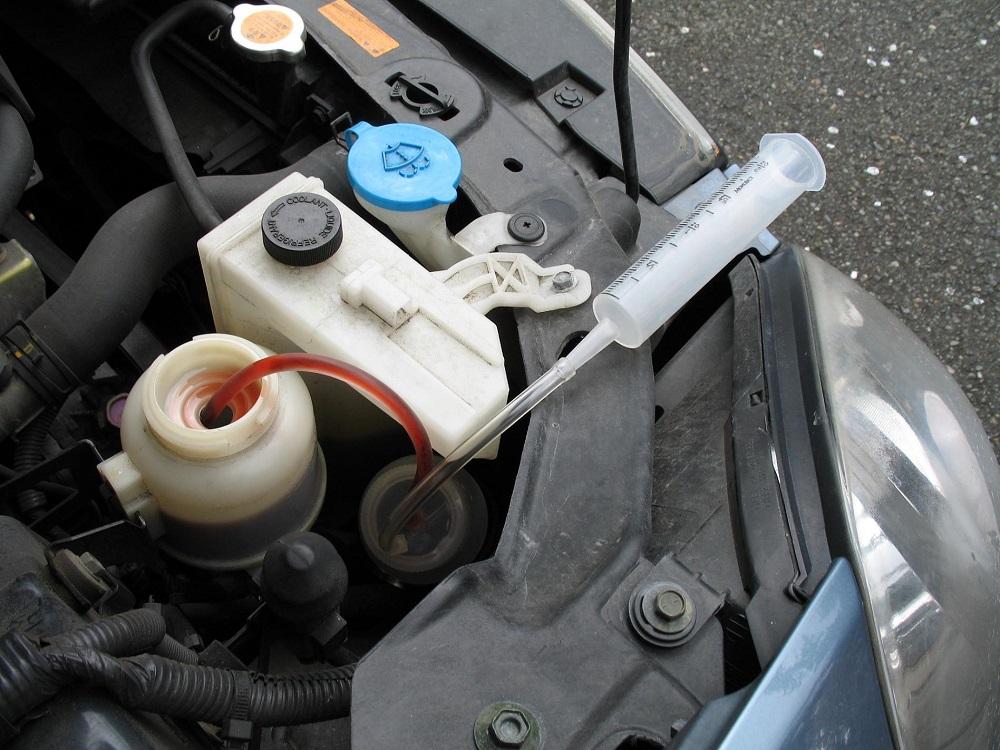Power steering fluid keeps all the components in the power steering system lubricated, thus keeping the system and your vehicle running smoothly without any trouble. However, you may need to flush this fluid sometimes to ensure the smooth operation of the power steering. Do you know how to flush power steering fluid?
Power steering is a great addition to modern cars. It allows the drivers to turn the wheel with one hand or even a finger. Steering was far more challenging in older days because rotating the wheel was harder in those cars.
If you are facing problems with the steering, especially if it feels loose or rigid, a power steering fluid flush may help. Since the fluid helps the system’s smooth operation by building up pressure, a flush is definitely going to help.
Contents
When to Replace Power Steering Fluid?
This is a valid question since a vehicle’s owner’s manual does not include flushing power steering in the maintenance schedule. Manufacturers call it a ‘lifetime fluid’, however there is nothing like that in reality. Auto mechanics agree that flushing at regular intervals is good for a vehicle’s health.
Like any solid automobile parts, the fluids are not immune to regular wear and tear. Dirt and metal particles contaminate them, and these contaminated liquids quicken the deterioration of the parts they lubricate.

Dirty power steering fluid can increase the wear of the pump, gear, and seals. To protect these components, you should perform flushing regularly. This fluid is highly durable and can last more than 100,000 miles.
However, expert mechanics suggest not to wait that long. Most of them agree on doing it every two years or between 75,000 and 100,000 miles. Some mechanics don’t like that long gap, advising to flush power steering system every 30,000 to 60,000 miles. However, the schedule may also depend on the vehicle’s age and model. So, it would be better to talk to your mechanic before performing a flush.
But how do you know that the system needs flushing? Look for these signs:
- Growling or moaning sounds coming from the power steering, especially at the time of making a turn, suggest that the system may need refilling.
- Fluid under the rear side of the vehicle indicates that there might be a leak in the power steering system. Consult an experienced mechanic to find out the defective part.
Check the fluid reservoir every month to see if there is any leak or damaged parts. The seals and o-rings can wear out over time and cause leakage.
How to Flush Power Steering Fluid
If you find your car showing these symptoms, you should check the power steering tank to see the condition of the fluid. Use a dipstick to measure the depth and check the condition of the fluid. If it looks dirty, you will need to flush the old fluid and then refill the tank.
If you don’t know how to flush power steering fluid, collect these tools and materials and follow these steps.
Materials You Will Need
- Car jack and jack stands
- Drip pan
- Funnel
- Pliers
- Paper towels
- Gloves
- Safety glasses
SEE MORE
How to Flush Power Steering Fluid: The Steps
Follow these easy steps to do a DIY power steering flush.
Park the Car
You have to find an even surface to park the car because you will need to jack up the car for the flushing and safe jacking requires a steady car on a plain ground.
Your garage is certainly the right place for doing this. If you don’t have a garage, find a place where the ground is flat.
Pinpoint the Power Steering Assembly
Look under the hood and you will see a steering column on the driver’s side. A long hose is supposed to be nearby, and it contains the power steering fluid. This assembly has a filter at the top that you need to remove.
Remove and Replace Some Components
Removing the radiator’s overflow tank will make it easier to access the power steering assembly. With it, take out the reservoir’s hose of the assembly.

A clamp keeps the hose attached to the assembly and it can be tight. You will need to twist it back and forth until the hose detaches from the clamp. Use a pair of pliers if necessary. Attach a new hose to that clamp but leave its one end free. The old fluid will come out through this end when you flush it out.
Jack up the Vehicle
After doing the groundwork, you will finally need to jack up the car for the flushing and refilling. Set on the emergency brake and use a floor jack to lift up the vehicle.
When the elevation seems enough for you to get under the vehicle and do the flushing without any hassle, set the jack at that height. Use jack stands for added safety.
Add New Fluid
Refill the reservoir with new fluid. Use a funnel for easy pouring. At that time, old fluid will come out of the hose’s free end. Place a drip pan there so it can collect the dirty fluid.
Lock the steering wheel and then move it back and forth a little. With that movement, old fluid will come out of the reservoir through that hose. Keep moving the wheel until the last drop of the old fluid is out of the system.
Install the Removed Parts
When the old fluid is flushed out and new fluid starts to flow through, attach the free end of the hose to its designated spot in the power steering assembly. Reinstall the radiator’s overflow tank.
Fill up the power steering tank with fresh fluid and replace the removed filter with a new one. Use paper towels to wipe out all unwanted drippings. Lower the car and remove the floor jack and stands. This is how to flush power steering fluid.



